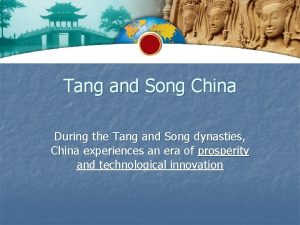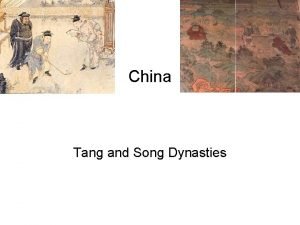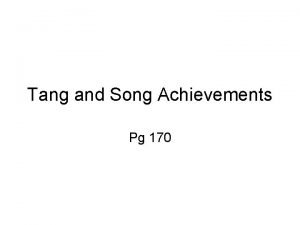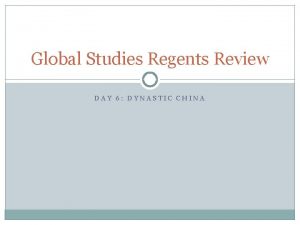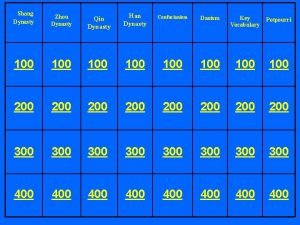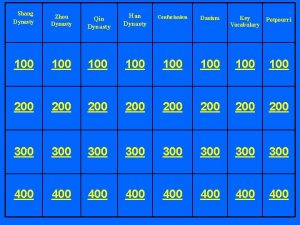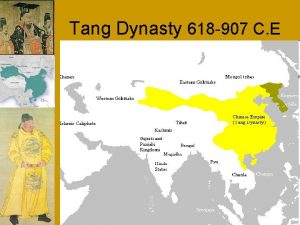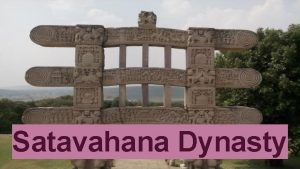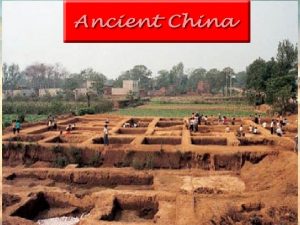SOL QUIZ 16 Tang Dynasty 1 During the






- Slides: 6

SOL QUIZ 16 Tang Dynasty

1. During the reign of the Tang Dynasty Chinese civilization and culture reached great heights. New land was conquered and art, literature, and poetry flourished. Which term best describes the era of the Tang Dynasty? a. Age of Philosophers b. The Golden Age of China c. Nationalist China d. Mongol China The reign of the Tang Dynasty (618 -907) was also known as The Golden Age of China because great advances were made in Chinese civilization and culture during this period.

2. What is meant by the term "cultural diffusion"? a. People believe that their own culture is superior to all others. b. People guard their customs and will not share them with others. c. Cultural practices are taught by the older generation to the younger. d. Customs and ideas are spread from one society to another. Cultural diffusion is the spread of ideas, traditions, innovations, and customs from one society to another. Often believed to have been isolated throughout its long history, ancient China was in fact part of the long-distance trading network, commonly known as the Silk Road.

3. Which of the following is an example of cultural diffusion? a. The tea ceremony which developed in China spread to Japan. b. Buddhism, which originated in India, spread to China, Korea, and Japan. c. both a and b d. neither a nor b Many aspects of Chinese culture spread or diffused into Japan and Korea over the centuries. Among the cultural practices Japan borrowed from China were the tea ceremony, and a writing system based on ideograms. Buddhism, a religion which originally developed in India, also reached Japan after spreading through China and Korea.

4. What effect did the Civil Service Examination have on Imperial China? a. It encouraged the study of Confucianism. b. It provided a method to reward the merit and hard work of individuals. c. It provided a vehicle for peasants to advance into a higher social class. d. all of the above Since the Civil Service Examination was based on Confucian principles, a person taking the exam had to study Confucianism carefully. If the person did well on the exam, he was rewarded with a well-paying government position in the bureaucracy; thus his hard work and merit were rewarded. Since nobody was barred from taking the test, theoretically a peasant could use the exam system as a vehicle into a higher social class.

5. Which of the following art forms was practiced extensively in China during the dynastic period? a. brush painting b. mosaic tile work c. origami d. sand painting Brush painting developed in China during the 10 th century. Artists used simple brush strokes to suggest complex themes.
